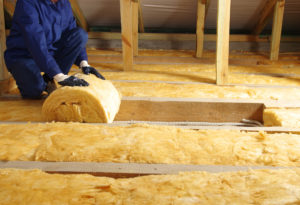
Homeowners have a lot of choices. From paint color to flooring material to HVAC systems. And yet, out of the many things homeowners consider when building a home or renovating their home, insulation doesn’t get too much consideration. Perhaps it’s not as exciting as choosing the color of your new accent wall or feeling a new hardwood floor beneath your feet. After all, insulation is not seen. It’s behind the walls. It’s quiet. It does not make the interior design magazine covers. And yet, it makes a tremendous difference in our home’s energy efficiency and energy consumption.
It makes a difference in the comfort and performance of the home.
So what’s the deal with insulation?
The Central Role of Insulation in Home Performance and Comfort
The 21st-century homeowner has little patience for homes that don’t perform or don’t complement the fast-paced lifestyle. Lucky for today’s homeowner, there are plenty of options to choose from.
The True Tale of Home Insulation and Its Impact on Home-Building
If your home was built before the 1950s, your home might not have a lot going on in the insulation department. Before that time in most American homes, you might see newspapers or other cellulose materials serving as insulation.
The concept of insulation is nothing new, however. Those nifty Egyptians knew the value in creating a barrier between the outside elements and their dwellings. The thick stones out of mud that the Egyptians used served this purpose very well. The Ancient Greeks dabbled in using an early form of asbestos. The Vikings used mud as a type of insulator, while King Arthur’s crowd in the Middle Ages used large tapestries over their building to keep out the cold and keep in the heat.
The Advent of Cellulose Insulation
Fast forward to America in the early 20th century and after the Roaring Twenties and the massive industrialization, American homebuilders and architects began implementing cellulose insulation in their homes. Technically speaking, many materials can be considered cellulosic and that includes newspaper, cardboard, sawdust, cotton, and more. The early iterations of cellulose insulation used recycled newspaper with an added fire retardant.
The insulation market blew up after the oil embargo during the early 70s. As the deficiency of oil tightened the access to heating costs caused Americans to feel the strain and to begin inquiring about ways for reducing the energy consumption. In comes the magic of insulation. People became much more energy-conscious in the 70s and the government played their role in encouraging it by offering tax credits.
The increase in cellulose insulation manifested in the rapid emergence of local manufacturers of the product. At the same time, however, the use of different products and materials led the federal government to begin regulating the industry.
The Emergence of Spray Foam Insulation
As bell-bottoms and disco music met their slow decline, the home industry was implementing polyurethane spray foam insulation for added efficiency. The material had actually been used during World War II, in airplanes and other military operations, but it did not hit the mass market until the end of the 1970s. The 1960s saw advancements in spray machines, which allowed for easy installation and made the material much more accessible.
Which Insulation is Best For Your Home?
If you are building a new home or researching which insulation to install during your home renovations or upgrades, here are a couple of things to note on each one.
Cellulose Insulation
This type of material could be loose-fill or blown-in material and it’s made of newsprint or denim. It comes in two main types: wet and dry.
Pros:
- It is environmentally conscious because it is recycled
- High fire-resistance
- R-value of cellulose R-3.2 per inch
Cons:
- Installation costs can be high because installation is tricky and requires a professional
- Cellulose insulation is known to absorb moisture easily. If not installed correctly it can rot.
- R-value can be reduced over time
Fiberglass Insulation
This is a common type of insulation that comes in batts and blankets and is fitted between joints and studs.
Pros:
- This is easy to install
- Cost-effective and accessible
- Supports vapor barrier
Cons:
- Fiberglass can be irritating for the lungs
- It not installed properly, performance degrades over time
- Potential for heat conduction through structural elements
Spray Foam Insulation
Closed-cell spray foam insulation has become a popular choice for energy efficiency.
Pros:
- As the product expands, it allows for the closure of small gaps and fitting into small corners and crevices
- No other insulation creates the air-tight seal of spray foam
- Reduces utility bills
Cons:
- Might not reach every gap and crevice
- Improper installation affects the quality and performance
- Because installation requires experience and expertise, the process can be tricky and thus requires a professional
Learn More About Spray Foam Insulation With EP Cleaning Solutions
Spray foam insulation can help with energy costs. If you are struggling with high energy bills, it might not be your HVAC system. Look into your insulation.
Call the experts at El Paso Cleaning Solutions and learn more! We do more than power washing and cleaning. We also have insulation solutions for your home.
